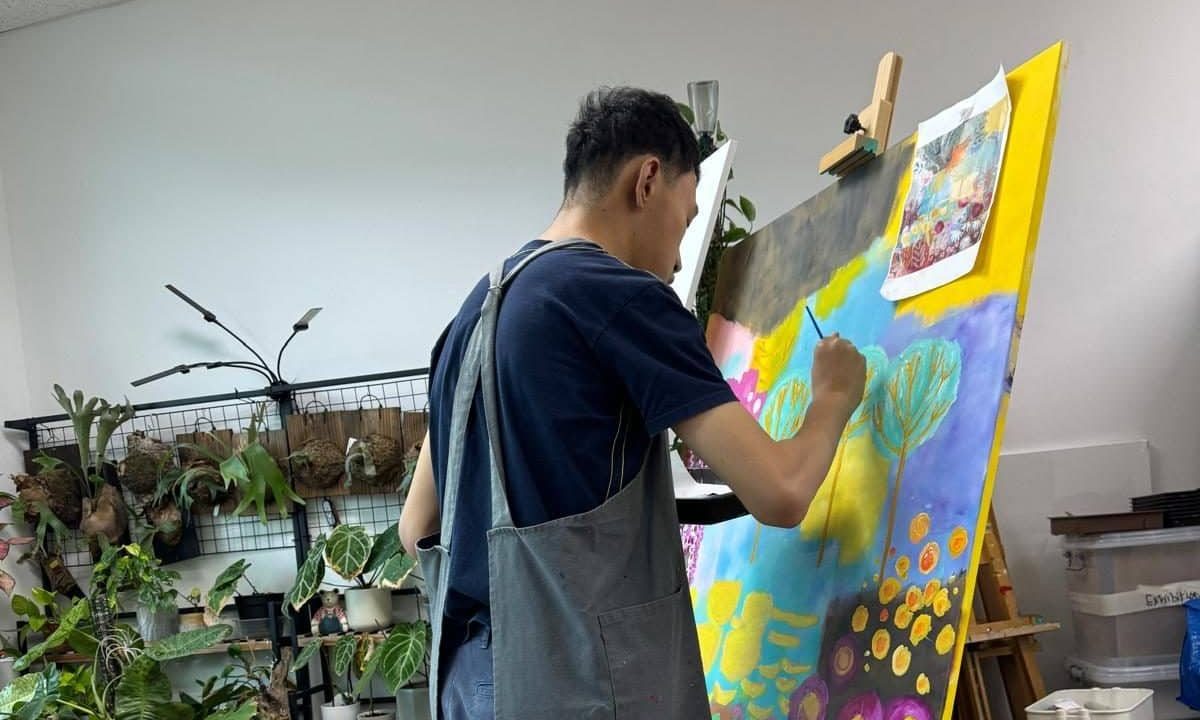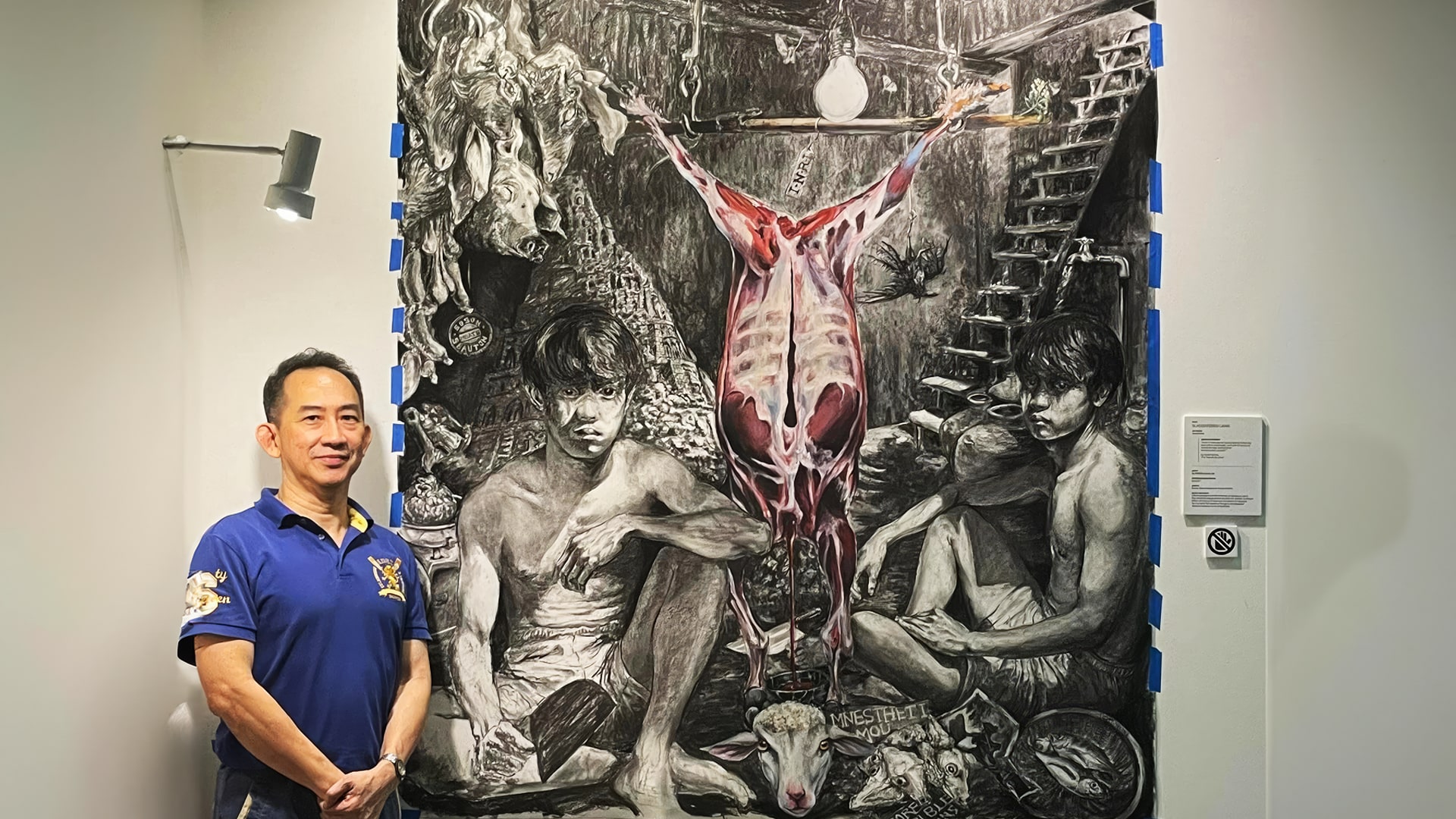Tapestries of love: The Cathedral’s embroidery is still hand-sewn
by Rachel Phua // March 30, 2019, 7:10 pm
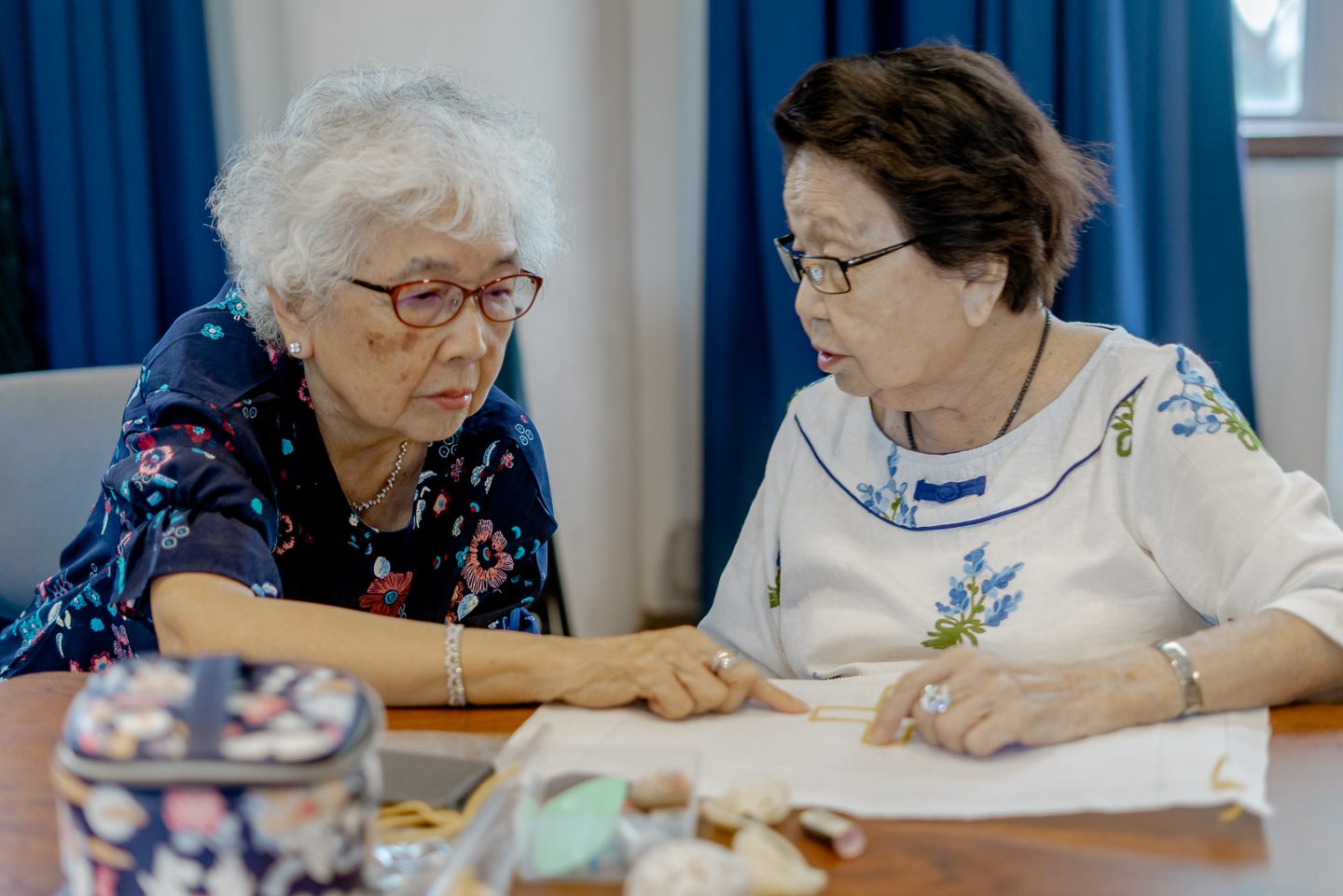
A dozen or so women meet Thursday mornings at St Andrew's Cathedral to sew and embroider fabric pieces for the church. Photo by Rachel Phua.
It’s a quiet Thursday morning at St Andrew’s Cathedral. On the second floor of the main building, a dozen women are practising an equally silent art.
The centrepiece of today’s meeting is a communion rail kneeler for Jurong Christian Church, a one-off project the team has been working on for the past eight months, stitching the Chinese words for “faith”, “hope” and “love” with crosses in between the words.
The ladies are part of the church’s Cathedral Women’s Fellowship, and meet every Thursday for about four hours each time to sew and embroider linen, table cloths, keyboard covers, stoles, frontals and other items.

When Salt&Light visited one Thursday morning in February 2019, the women were working on a communion rail for Jurong Christian Church. Photo by Rachel Phua.
According to Caroline Lau, the head of the ministry, the embroidery ministry started more than 150 years ago, when the Cathedral was first built. The pioneering priests were from England, and one of the ways their wives helped in their work was by producing the necessary tapestry.
Eventually, local women from the parish joined them, and carried on the tradition when the expatriates moved away. Lau’s mother, Marjorie, was one of them.
After joining in the 1950s, Marjorie led the ministry from the 1960s to 1990s. She is the person behind many of the works still seen around the Cathedral today.
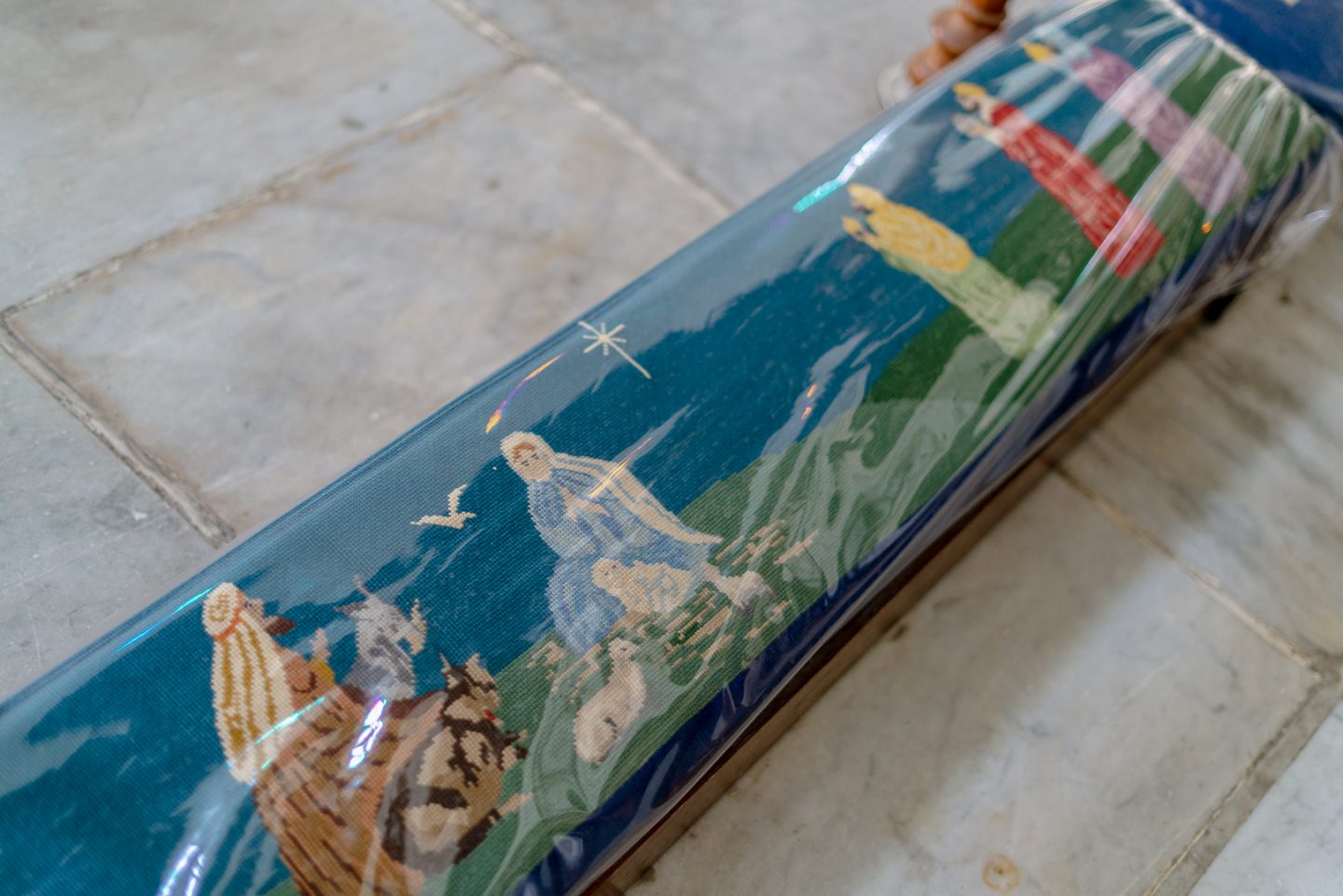
The kneelers at the communion rail are a depiction of the nativity scene. The design was done by Caroline Lau’s mother, Marjorie Lau. Photo by Rachel Phua.
Lau grew up watching her mum spruce up plain fabrics with her intricate motifs, picking up the skill at the same time. When Lau retired from her job, she accompanied her mum to the weekly sessions, subsequently joining the women in the late 1990s. In 2004, her mum stepped down from the leadership position and she took over.
A complex craft
It takes a year before any member can work on an actual piece. They first have to complete a practice piece – the design was passed down by the expatriate women from the colonial period – a pattern of six flowers and leaves that forces the sewer to grasp the various styles of embroidery.
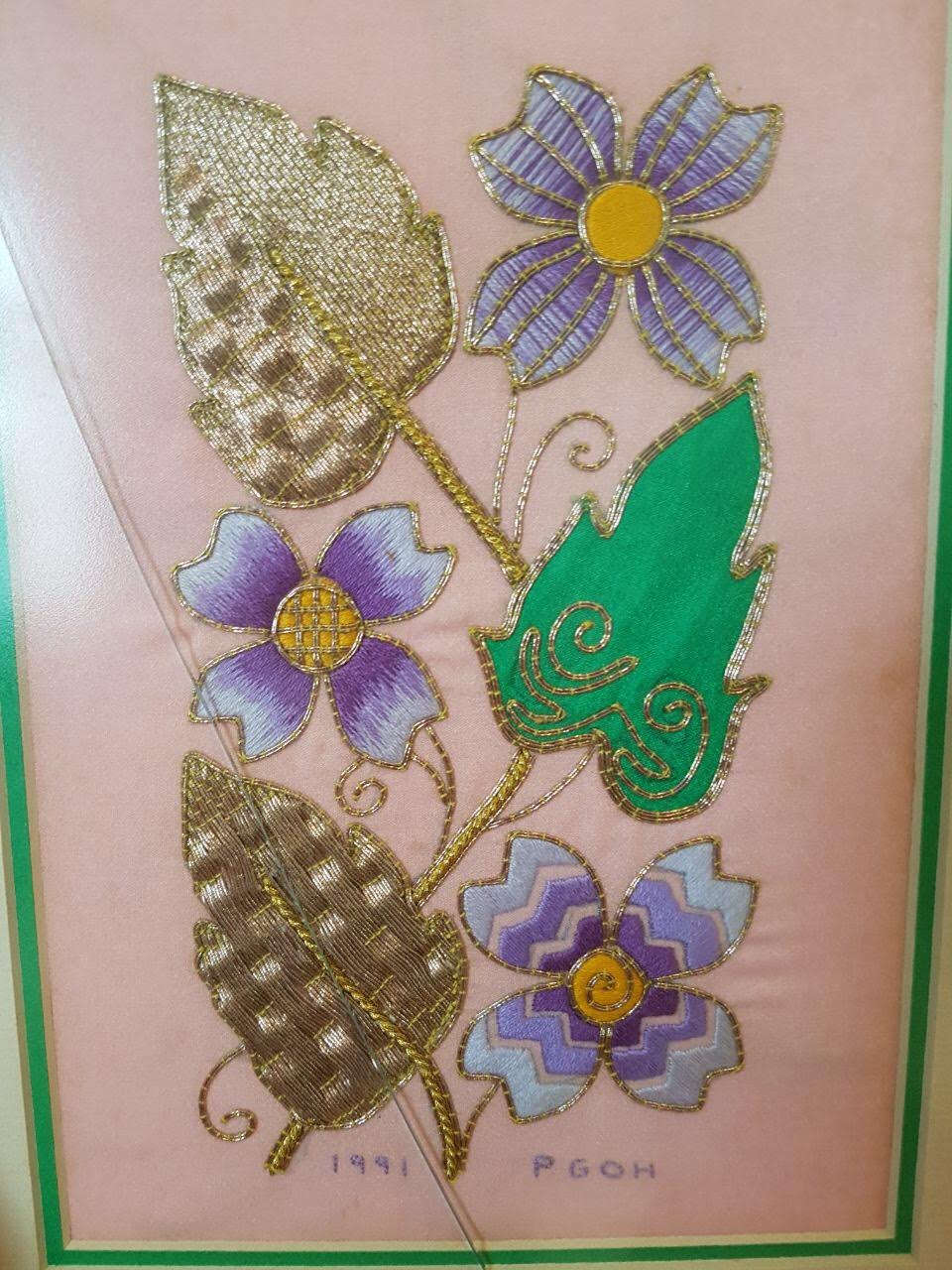
The practice piece, a set of three flowers and three leaves, requires the sewer to grasp the different styles of embroidery. Photo courtesy of Cathedral Women’s Fellowship.
Though much of their bespoke creations are still well-kept on church grounds, there will always be work to be done, Lau says. The burse and chalice veils, taken out during Holy Communion, get ruined easily by candle wax that lands onto the cloth. The pieces are too delicate to wash, so all the vergers can do is scrap the wax off, which still leaves stains.
New ones take between three to six months to sew. Larger pieces, such as the altar cloth at the Lord’s Table and the Diocesan banners, take years and more than one person to complete.
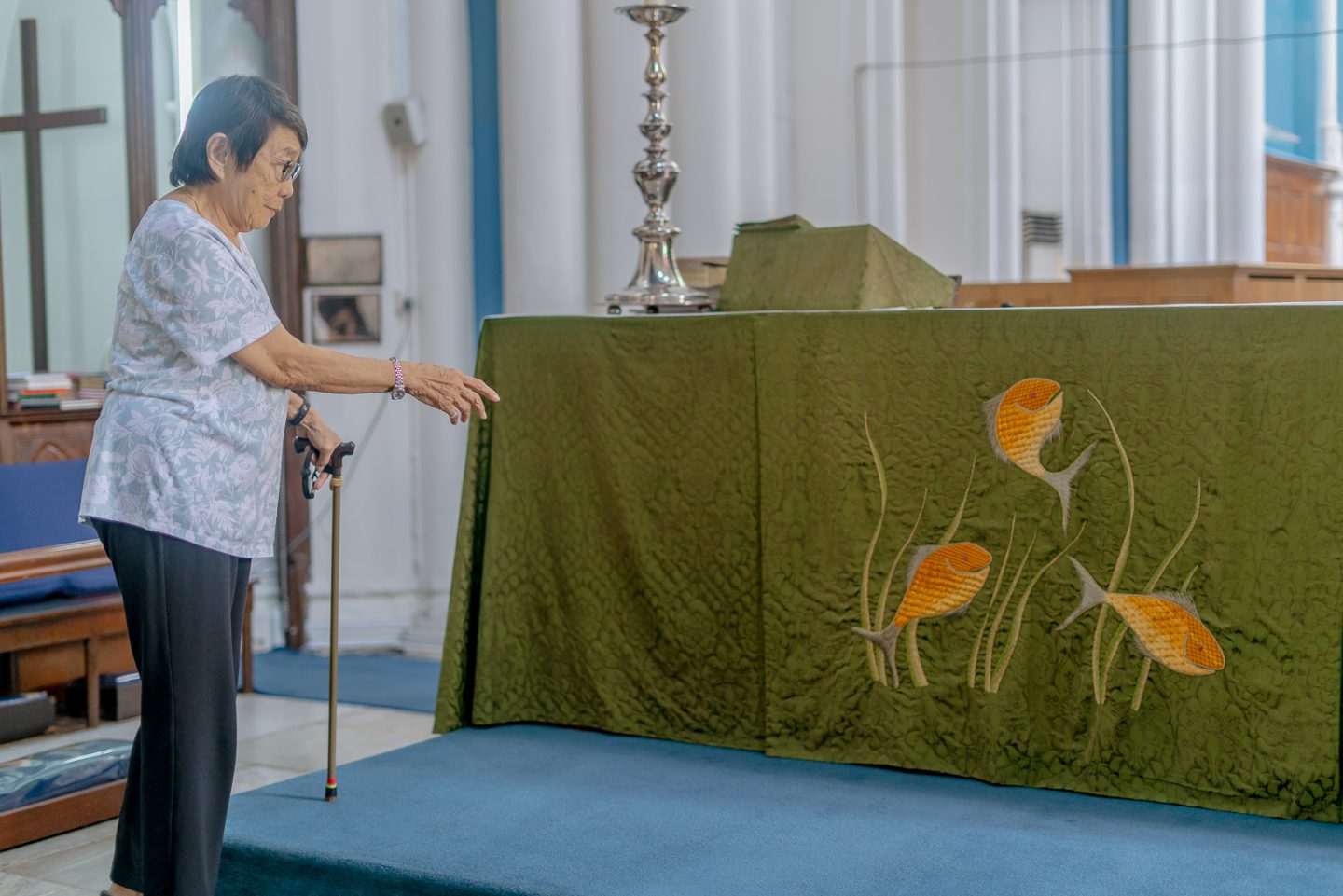
The Greek word for fish stands for “Jesus Christ, Son of God, Saviour” and is depicted on the altar cloth at the Lord’s Table. Photo by Rachel Phua.
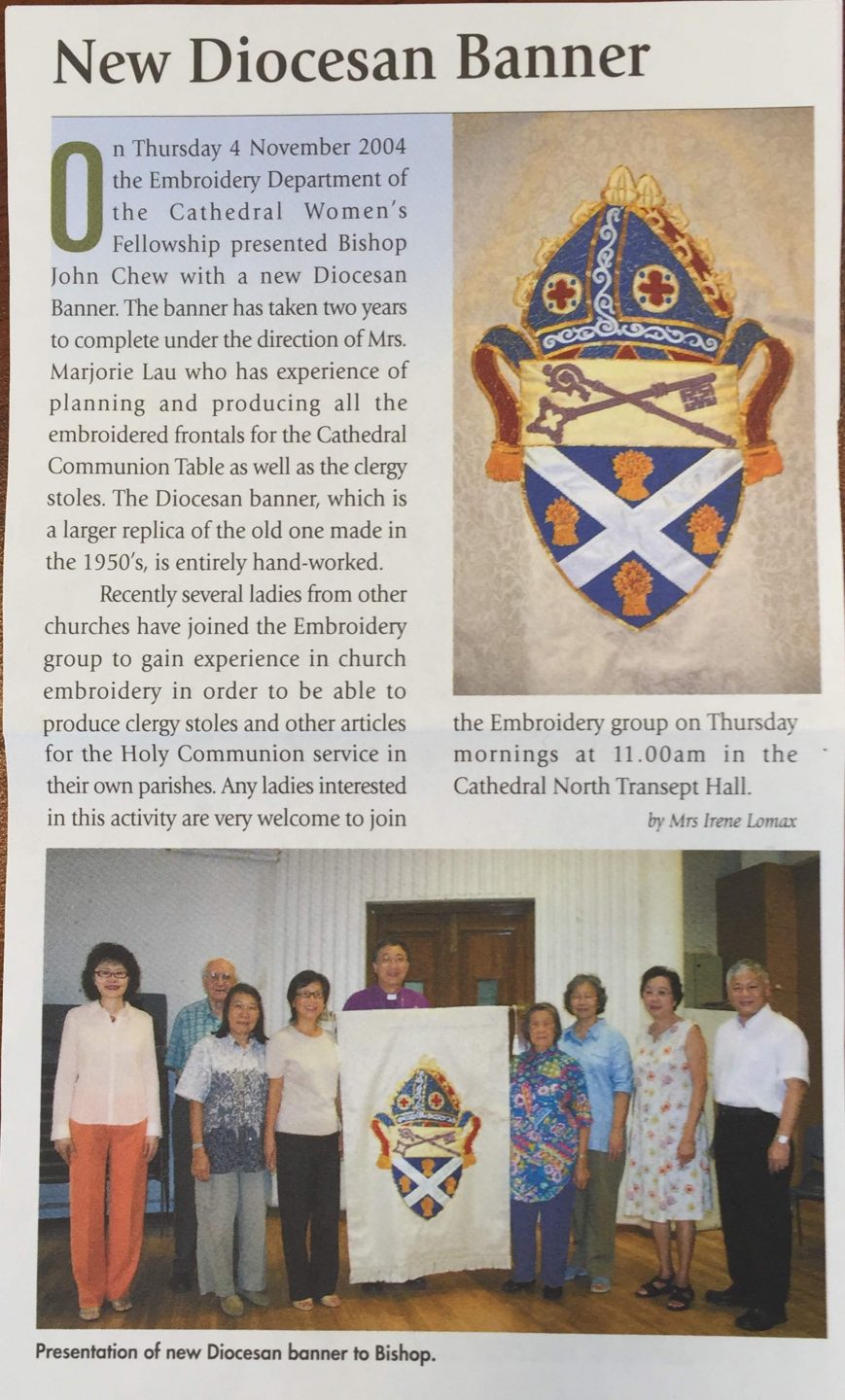
An Anglican newsletter article that featured the diocesan banner, which took the group, then under Caroline Lau’s mother, two years to finish. Photo courtesy of the Cathedral Women’s Fellowship.
Designs are usually taken off websites or old embroidery books guiding the reader how to weave Christian – and specifically, Anglican – symbols like fish, which in Greek is “ichthys”, an acrostic for “Jesus Christ, Son of God, Saviour”; or Alpha and Omega (Revelation 1:8) signs that represent the Lord as the beginning and end of everything.
Lilies and roses are other common emblems – signifying the Holy Trinity and martyrdom, respectively – as are doves (Matthew 3:16) and lambs (John 1:29).
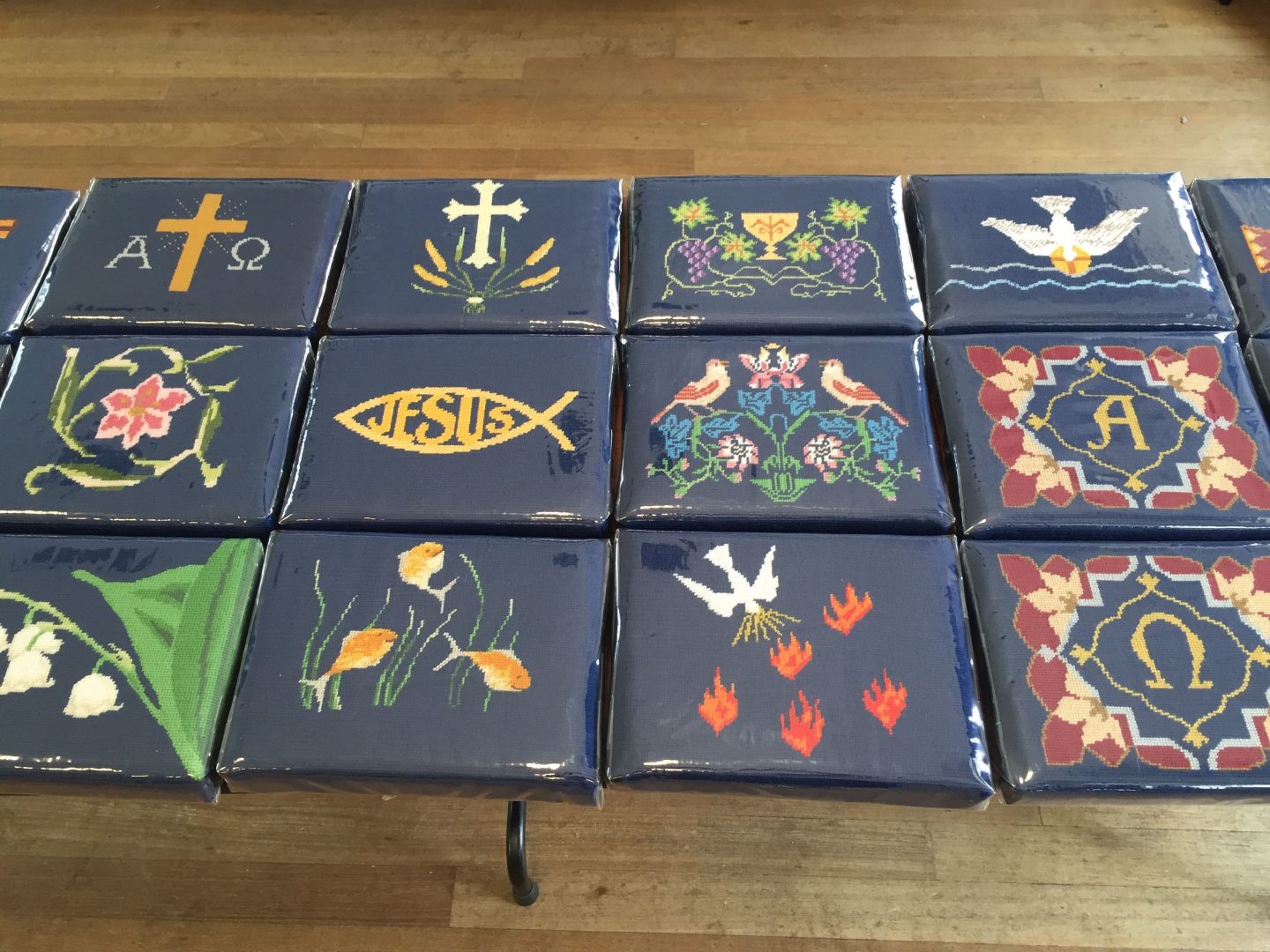
The smaller kneelers placed around the Nave showcase the different symbols of God and Christ. Photo courtesy of the Cathedral Women’s Fellowship.
The group’s members are now in their 50s to 80s, and Lau is looking for someone to pass the mantle onto. New members, even those who are not from Anglican churches, are welcomed too.
Given that most women work on weekdays, the group launched a monthly Saturday session at the church’s public cafe in 2017. Attendees cross-stitch bookmarks that are sold to visitors. This gathering has also provided an avenue to reach out to non-Christians.
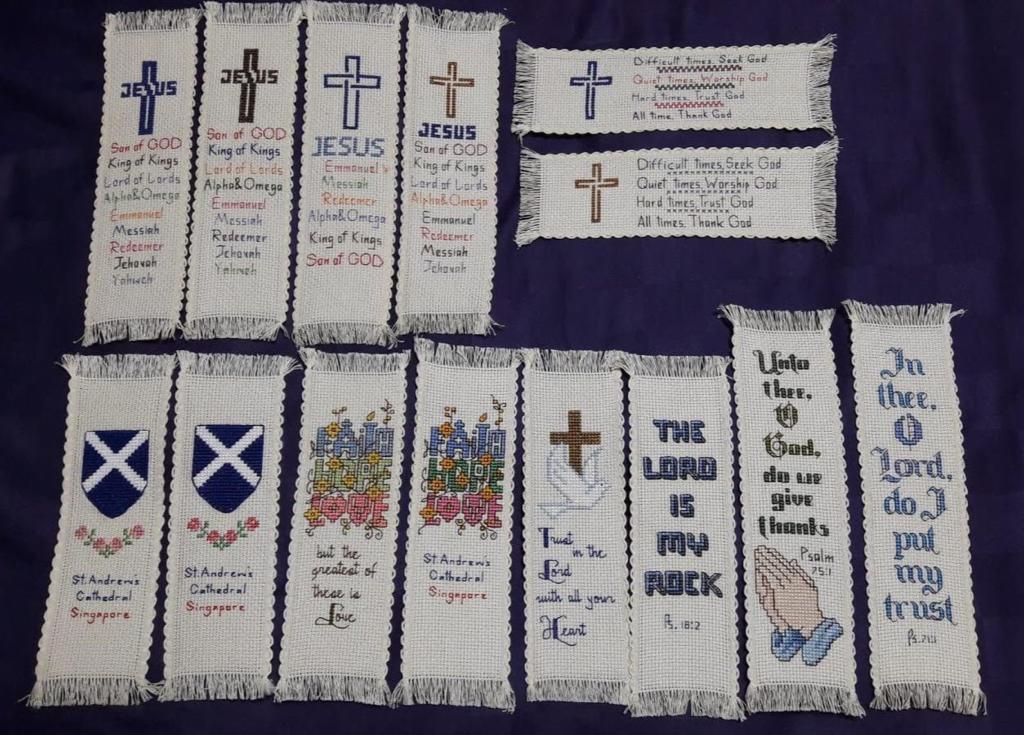
The bookmarks done during the Saturday sewing sessions are for sale. Photo courtesy of Cathedral Women’s Fellowship.
“We love the work we do and we want to do something really good for God.”
In spite of the painstaking effort behind each work, the group of women insists on stitching every image by hand, instead of using a machine.
“Doing it by hand creates more three-dimensional and vibrant designs,” notes Ling Pek Ling, a member of the ministry. “Hand-sewn ones just jump out to you.”
Explaining the crux behind going artisan, Lau says: “We love the work we do and we want to do something really good for God (Colossians 3:23).”
If you would like to find out more about the embroidery ministry at St Andrew’s Cathedral, you can contact Ling Pek Ling at 9691-7366.
We are an independent, non-profit organisation that relies on the generosity of our readers, such as yourself, to continue serving the kingdom. Every dollar donated goes directly back into our editorial coverage.
Would you consider partnering with us in our kingdom work by supporting us financially, either as a one-off donation, or a recurring pledge?
Support Salt&Light